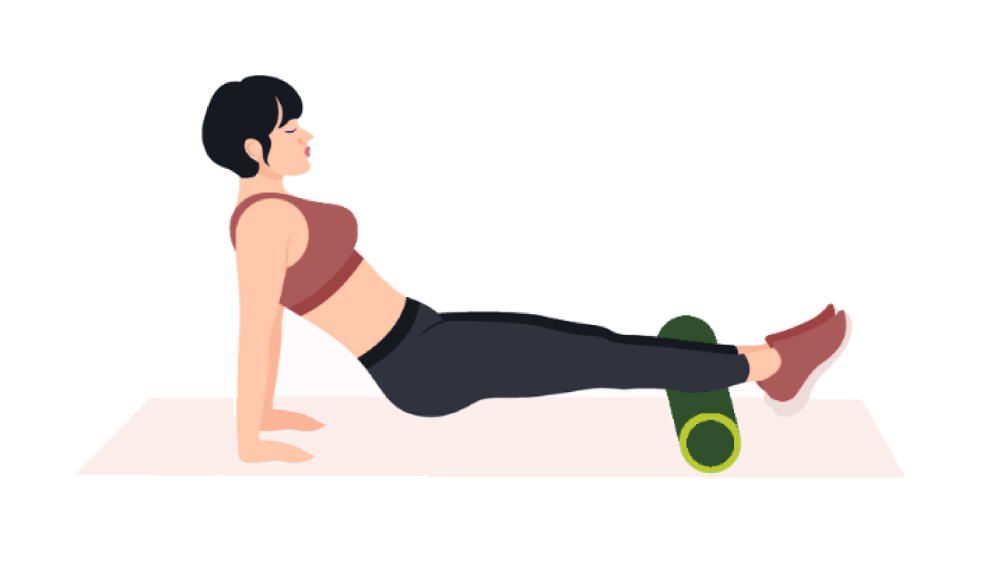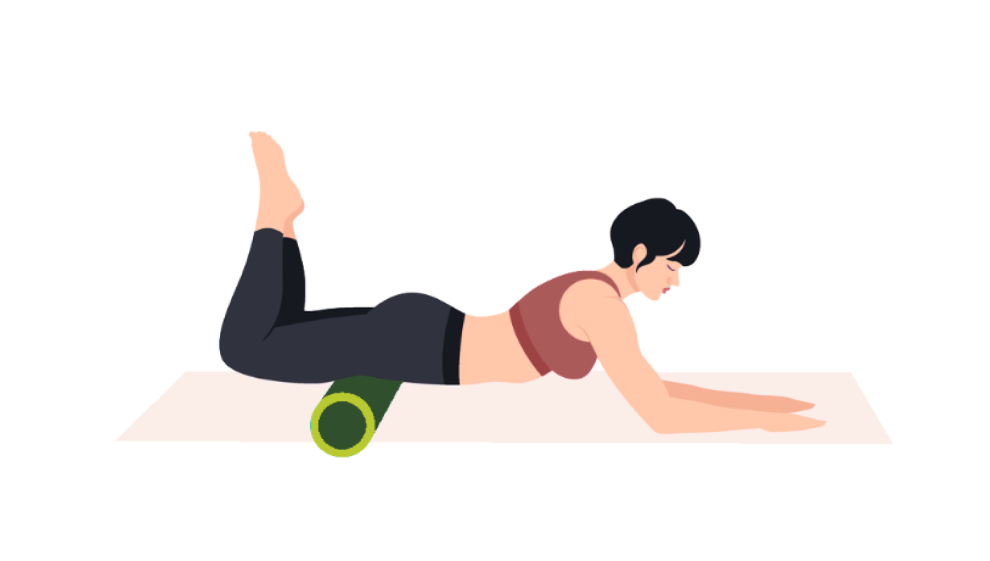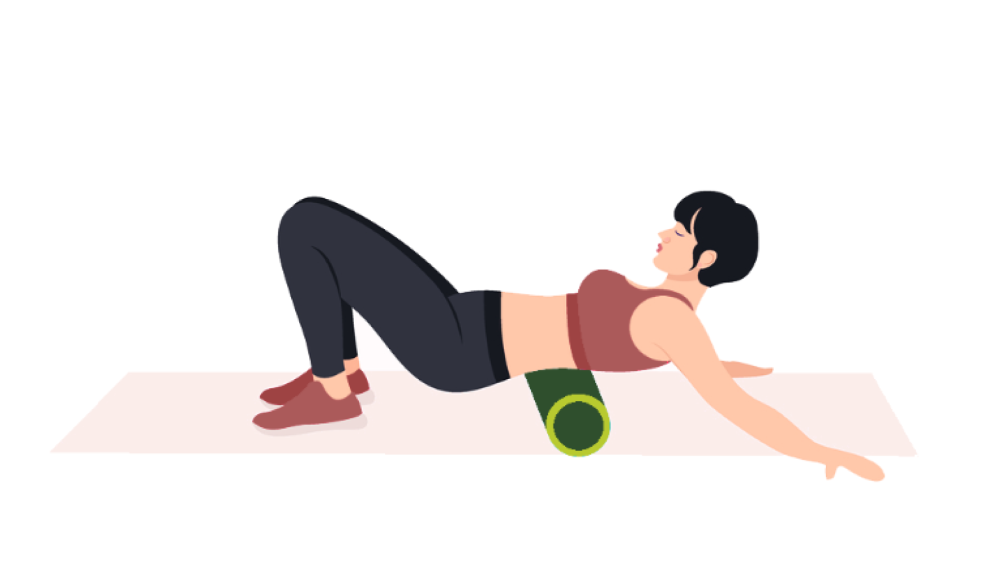All you need to know about foam rolling for recovery
- Overview
Wondering how it works? Nuffield Health National Physiotherapy Lead Jodie Breach helps explain what foam rolling can do for your performance and recovery.
What is foam rolling?
Foam rolling is a recovery technique that involves applying pressure to a muscle to relieve tension and soreness. Popular before and after working out, rollers are now a staple piece of equipment in gyms and health and wellbeing centres.
Foam rolling is a type of self-myofascial release (SMFR) used to alleviate sore spots in our muscles. This form of self-massage uses the individual's body weight in conjunction with a foam roller to apply pressure to a certain point to release stress and tension in the muscle.
What can foam rolling help with?
One study found that foam rolling has several tangible recovery benefits, both before and after exercise. These include:
- Reduced delayed onset muscle soreness (DOMS)
- Increased mobility and range of motion in your joints
- Enhanced recovery improves future workout performance
- Potential for improved vascular and parasympathetic nervous system function.
How does foam rolling work?
When you’re pounding the pavement on a run or squatting multiple plates in the gym, your muscles become damaged and need to recover to get stronger. This puts a great deal of strain on the body and can leave your muscles feeling worn out and fatigued.
When you apply pressure to soft tissue with your roller, receptors transmit signals to your spinal cord. In response, your parasympathetic nervous system (responsible for relaxing the body) sends a signal to your muscles, prompting them to unwind and relax.
On top of this, foam rolling is a great way to gradually reduce the presence of knots in your muscles. Knots (also known as sore spots) occur when a repetitive motion causes a muscle to go into a sort of spasm.
Does foam rolling really work?
Lots of recovery techniques feel good, but are they really working? When it comes to foam rolling, the answer is yes. Foam rolling really does work.
Studies on foam rolling indicate that the practice does indeed improve performance when undertaken before working out. The findings in this study show that sprint speed was improved by 0.7% and flexibility by 4% when foam rolling before working out.
If you’re thinking of using a foam roller after a workout to aid with recovery, data indicates that this is just as worthwhile. In this study, the prevalence of muscle soreness was reduced by 6% when a foam roller was used after working out. On top of this, rolling after strength and sprint workouts helped reduce loss of performance in following sessions by 3% and 4% respectively.
Whilst these numbers are minimal, they are positive. Foam rolling appears to offer benefits with recovery and improving your performance, but it won't replace a balanced and healthy lifestyle. For maximum recovery impact, make sure you’re getting enough sleep and nailing your food and nutrition.
How to use a foam roller the right way
If you’ve heard about foam rolling and think it might work for you, there’s a few different ways you can do it.
For an idea of some quick and easy stretches to get the most out of your foam roller, take a look at the video below:
The best way to use a foam roller
Rolling the core muscle groups (quadriceps, hamstrings, glutes, and calf muscles) is an effective way of relieving tension in areas that regularly get fatigued and sore.
You’re going to use the roller slightly differently to work each of these individual muscle groups. Keep reading and consult the images below for a detailed breakdown of our three favourite foam roller stretches.
How to foam roll calves

Additional calf flexibility goes a long way to improving stride length and your overall athletic performance.
To foam roll your calves, sit on the floor with straight legs out in front of you. Place your foam roller underneath your Achilles and raise your torso up, forming a platform with your hands. Gently use the roller to apply pressure and target tender areas where necessary.
How to foam roll your quads

Don’t rush this movement. This large muscle group can get incredibly tender.
Lay flat on your stomach and place your foam roller underneath your thighs. Using the image on the left as your guide, gently bend your legs at the knee. Gently rock yourself back and forward, taking care to effectively stretch the muscle.
If you’re looking for more control, roll your legs one at a time and use your arms for balance.
How to foam roll your back

To safely roll your back, lie on the floor with your foam roller placed horizontally underneath your shoulders. Slowly roll your upper back up and down the roller, pausing at any tense areas to focus pressure.
Movements like this can improve posture by countering the effects of prolonged deskwork. To enhance this effect, extend your arms out in front of you as you move up and down.
What to avoid doing
- Don’t foam roll directly onto a joint or a bone
- Stick to foam rolling muscles, avoiding bony points
- Never foam roll or apply direct pressure to your neck.
When to foam roll
Foam rolling can be carried out both before and after training. When you foam roll is entirely up to you and depends on where and when you workout, as well as your level of activity and activity type.
Most gyms have a designated area for floor and yoga exercises where you can foam roll after a workout. If you’re at home or just in from a run, an open floor or carpet area is just as good.
If you’re still sore the day after a heavy workout, you might find foam rolling beneficial for your rest day too. This
When not to foam roll
Foam rolling can help with recovery from exercise but can cause problems if you're injured. Consider consulting a professional before using a foam roller if you have any of the following conditions or injuries:
- Open wounds
- Skin conditions
- Injuries
- Osteoporosis
- Arthritis
- Blood clotting disorders
- Acute infections
- If you are pregnant
- Nerve conditions
- Post-surgery scarring
How long should I use a foam roller for?
The quality of a stretch is far more important than the quantity. A good foam rolling routine shouldn’t take more than five to ten minutes to complete.
A good rule of thumb to follow is roll a muscle out for around one minute. Make sure that as you apply pressure, you stretch the muscle out for maximum results.
Is it okay to foam roll every day?
There’s nothing wrong with using a foam roller every day. If you work out regularly and find that DOMS are a recurring issue, integrating a foam roller into your recovery routine to target specific areas and muscle groups can be beneficial.
There’s no downside to using a foam roller if you know what you’re doing. If you are concerned you’ve overworked a muscle, or that foam rolling might be having a detrimental effect on your body, consider discussing your routine with a physiotherapist.
- Looking to learn more about rest and recovery? Click here for more information
Are there different types of foam roller?
As the popularity of foam rolling keeps growing, different styles and sizes of roller continue to emerge.
With so many options available, choosing the right one for you can be tricky. Some of the most popular designs include:
- Ribbed foam rollers
- Vibrating foam rollers
- High density foam rollers
- Long foam rollers
- Deep tissue foam rollers
- Stick foam rollers
Last updated Thursday 24 October 2024
First published on Monday 18 September 2023

